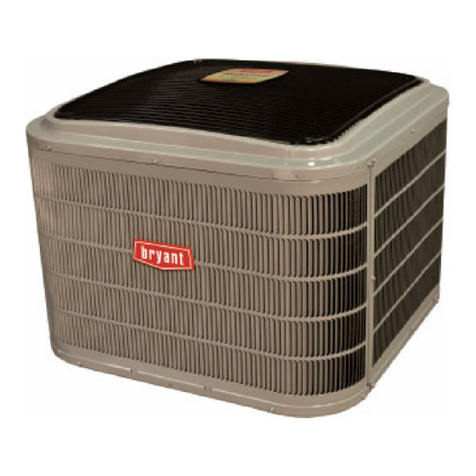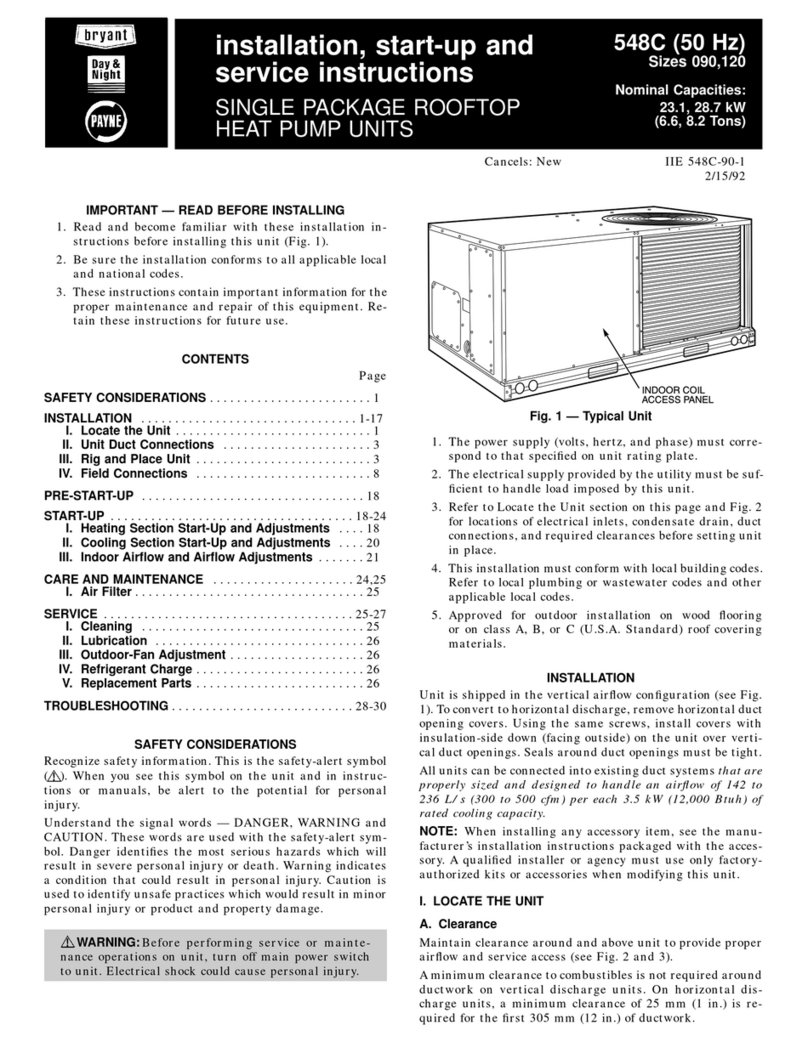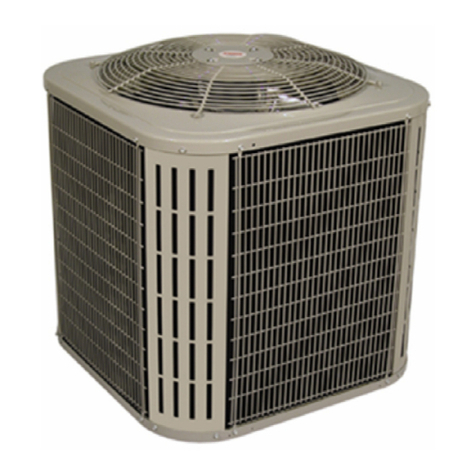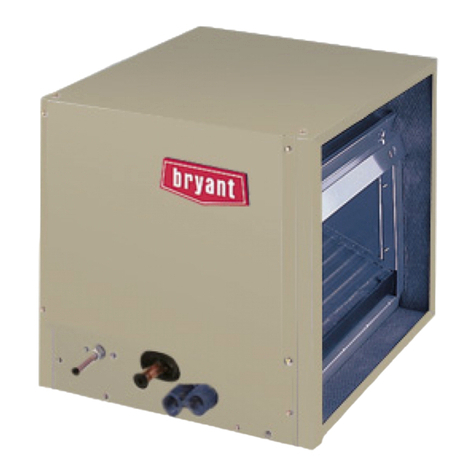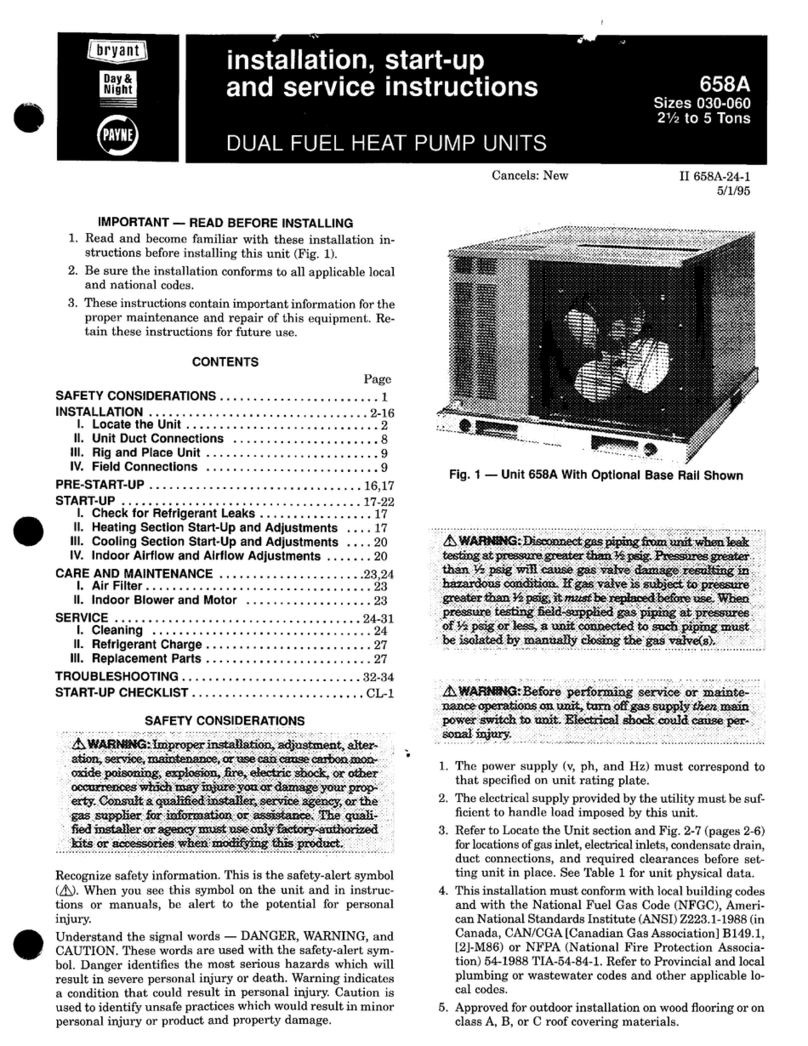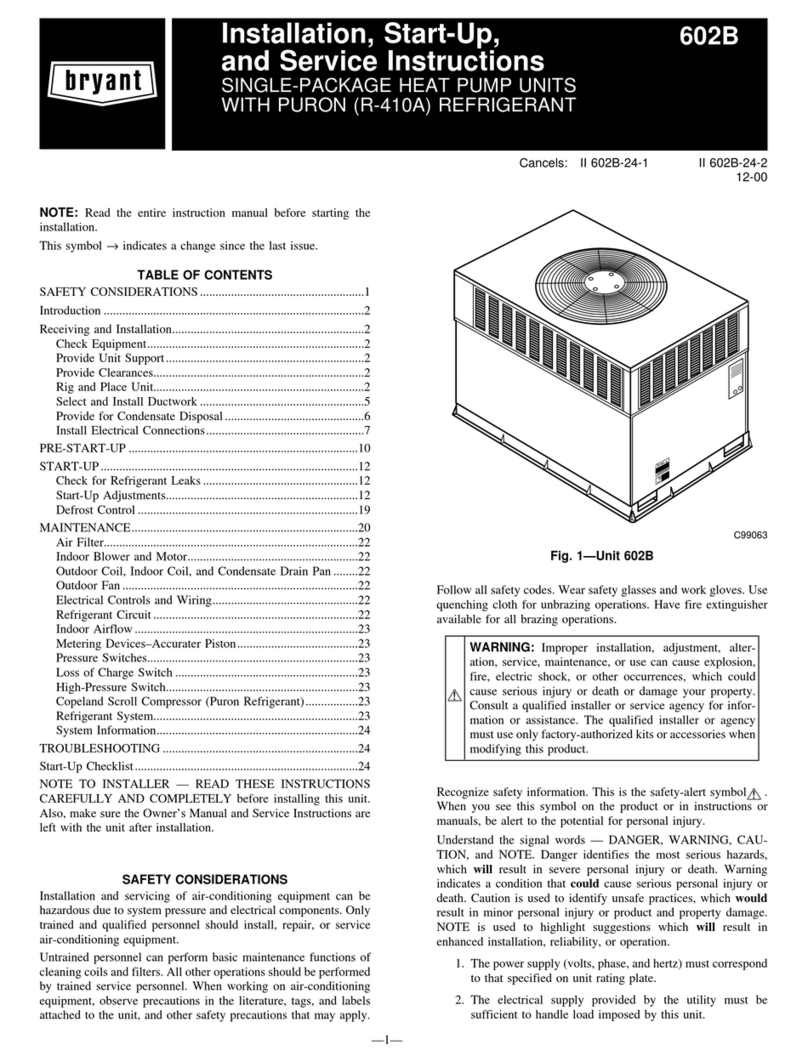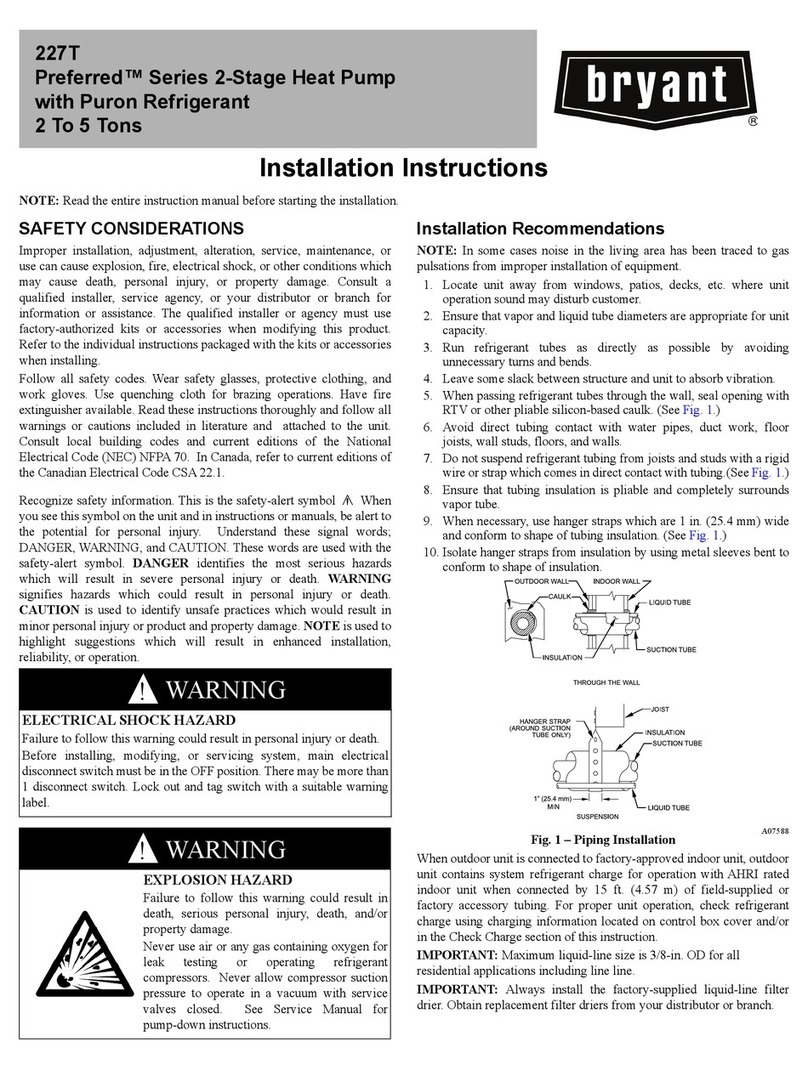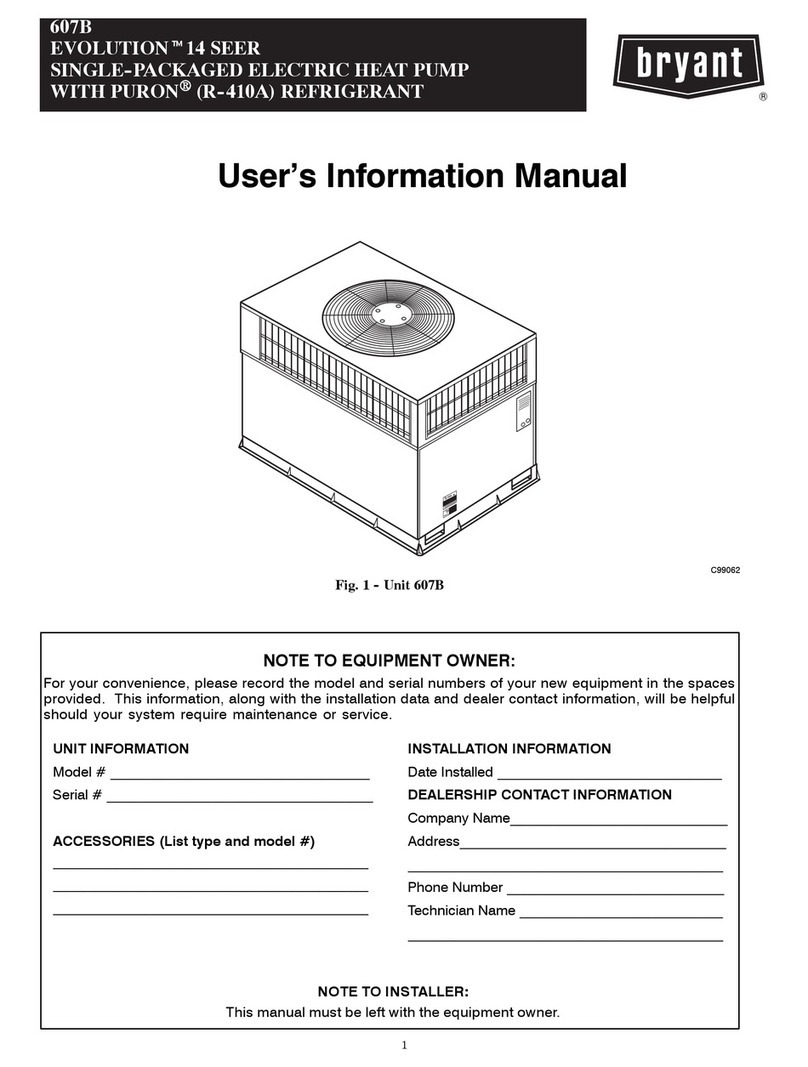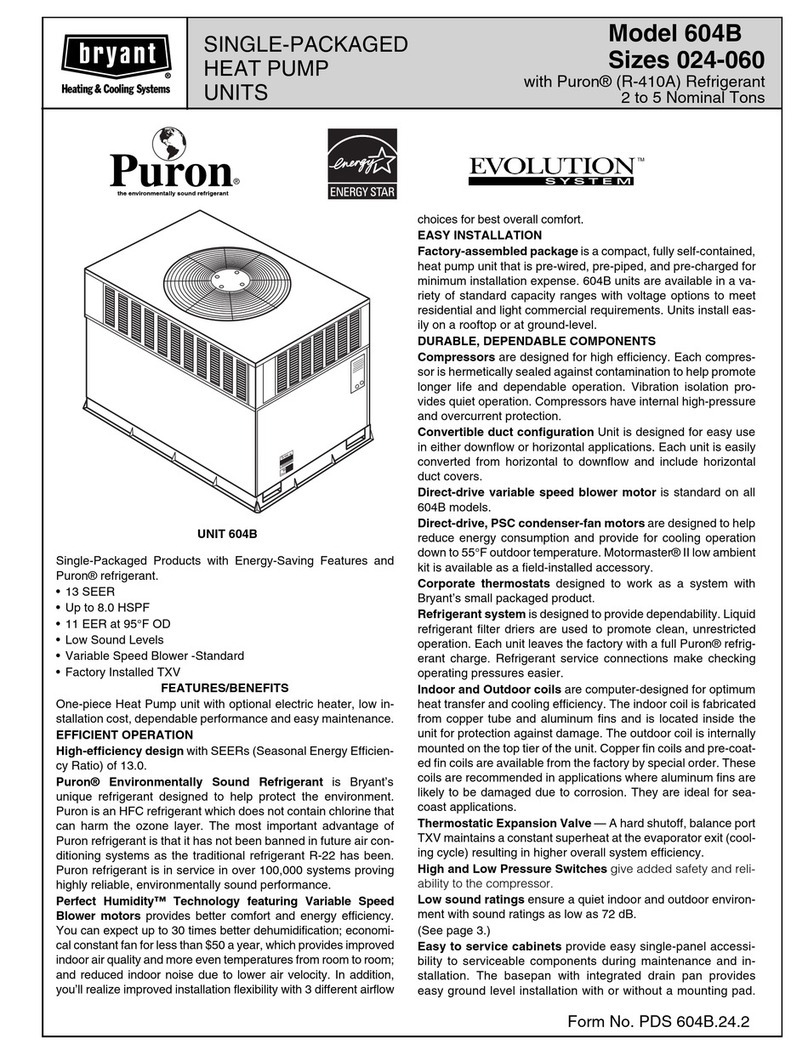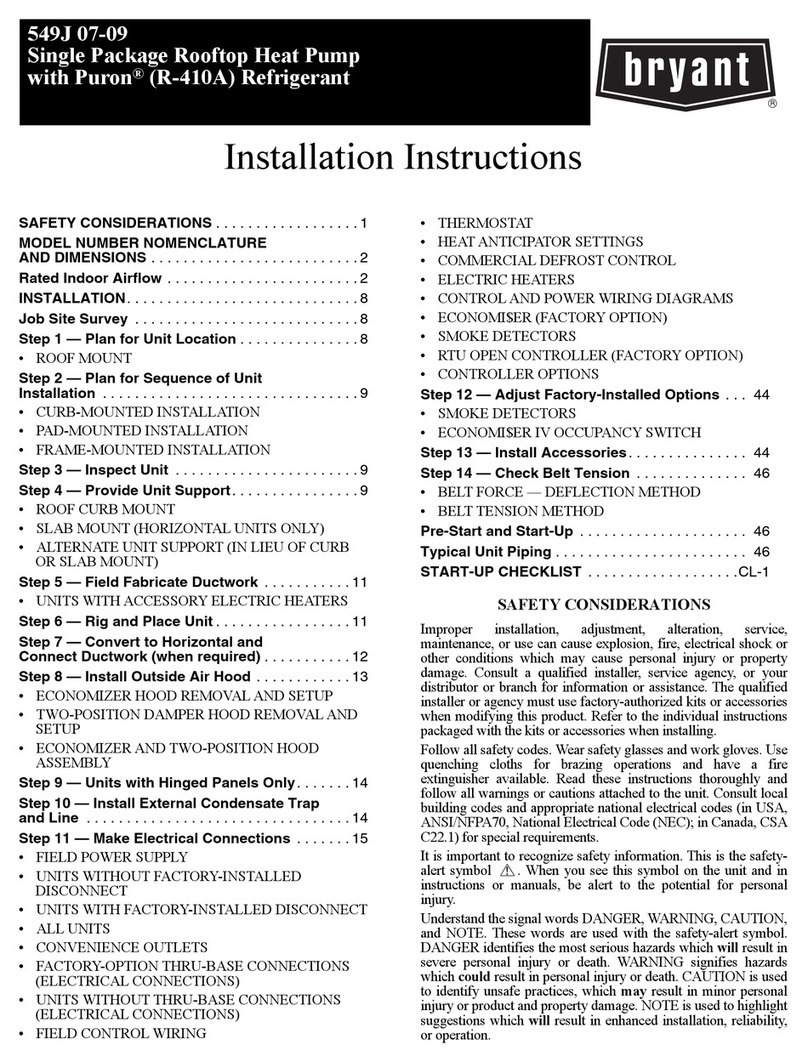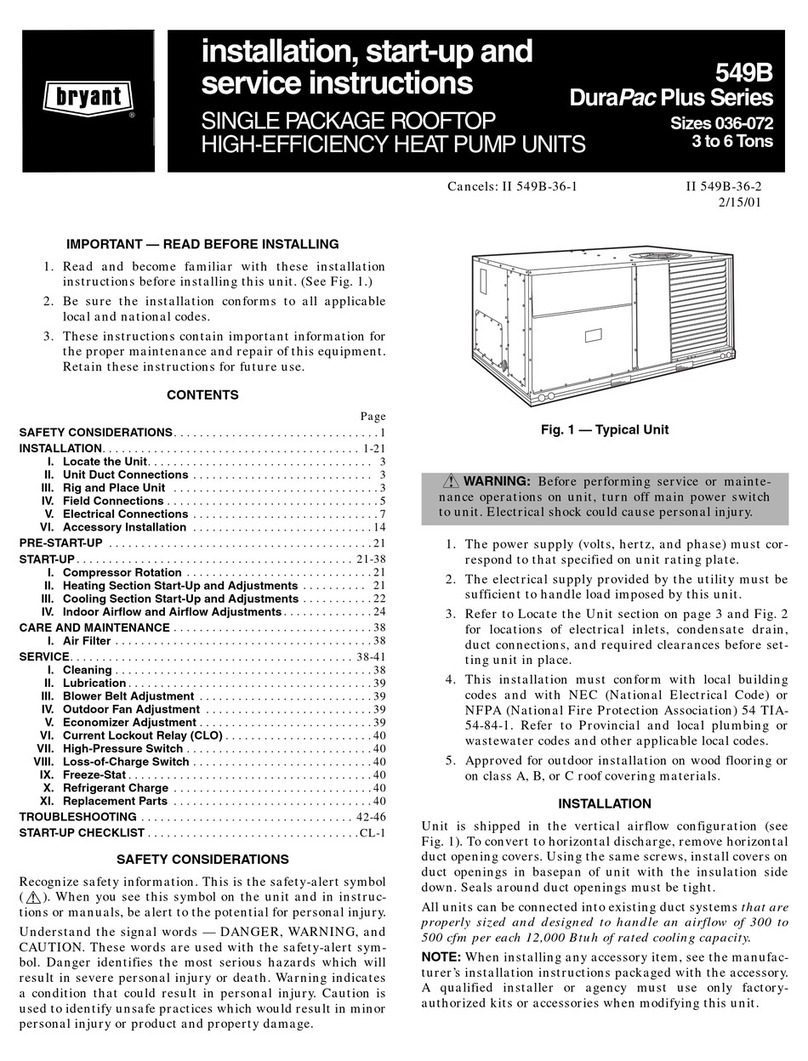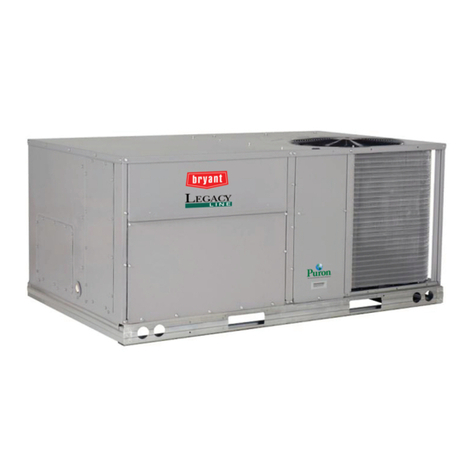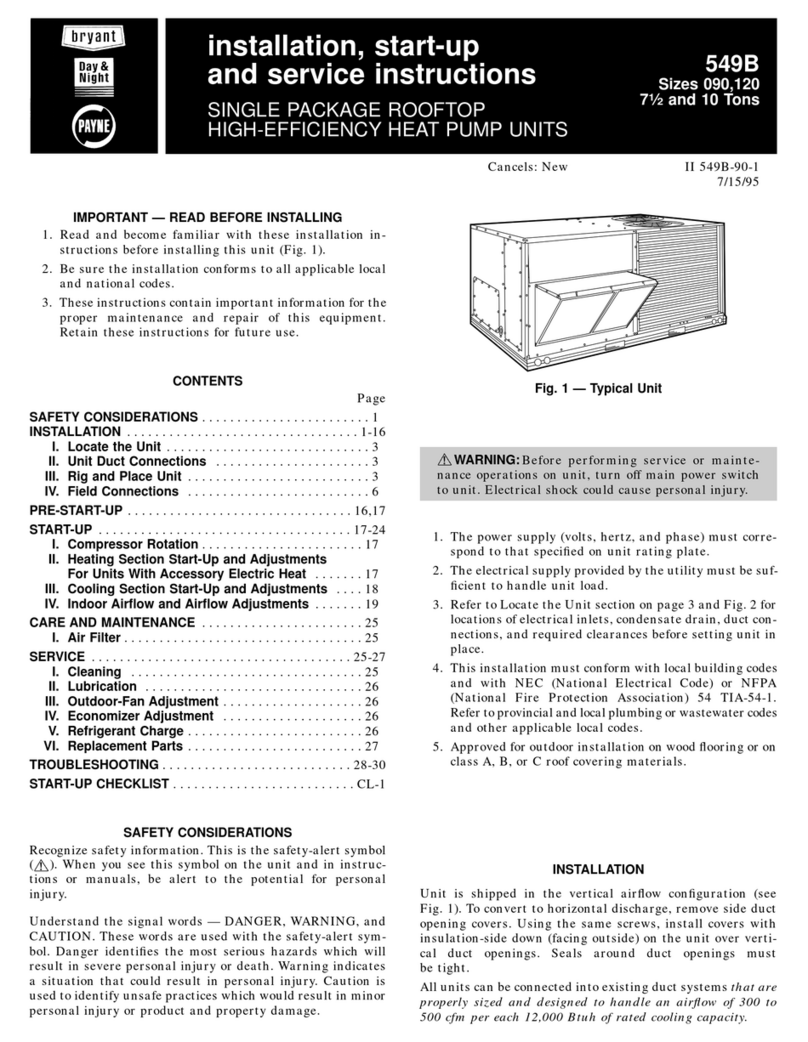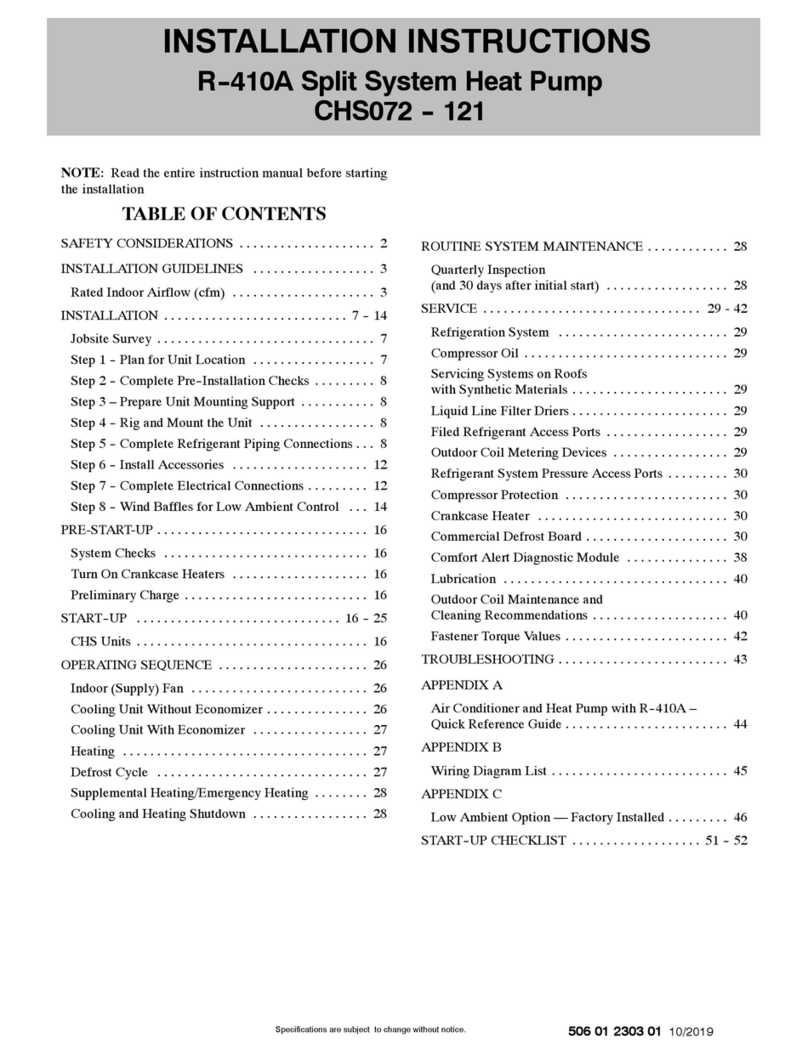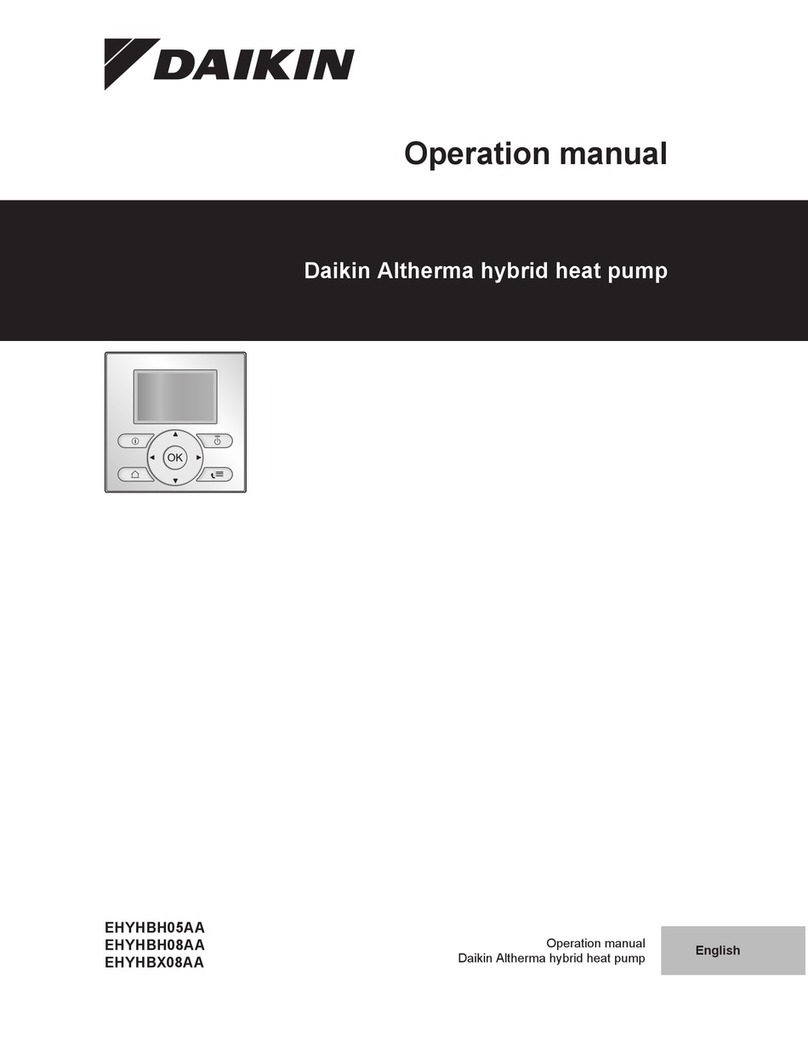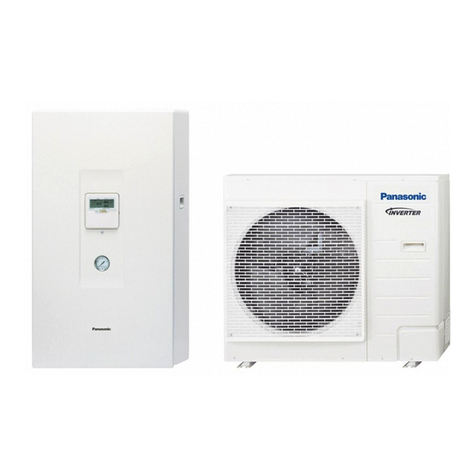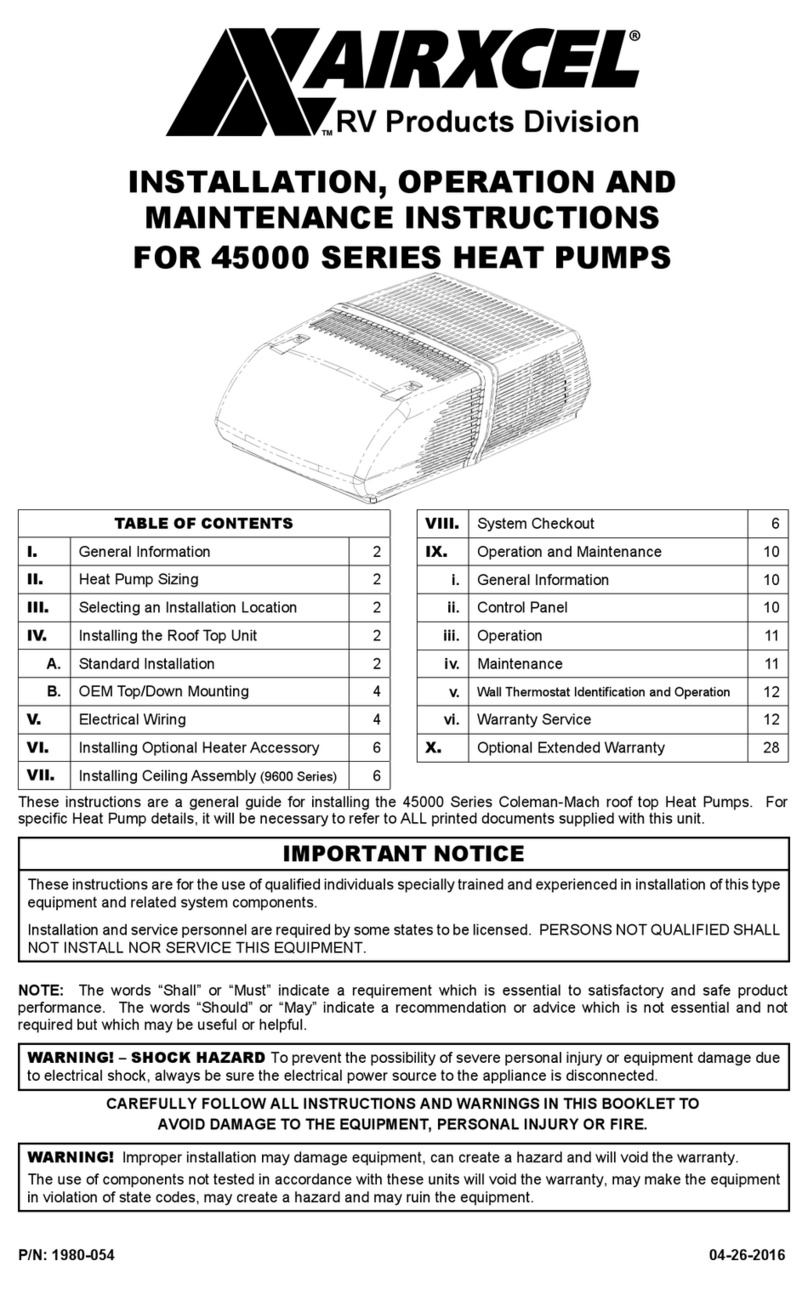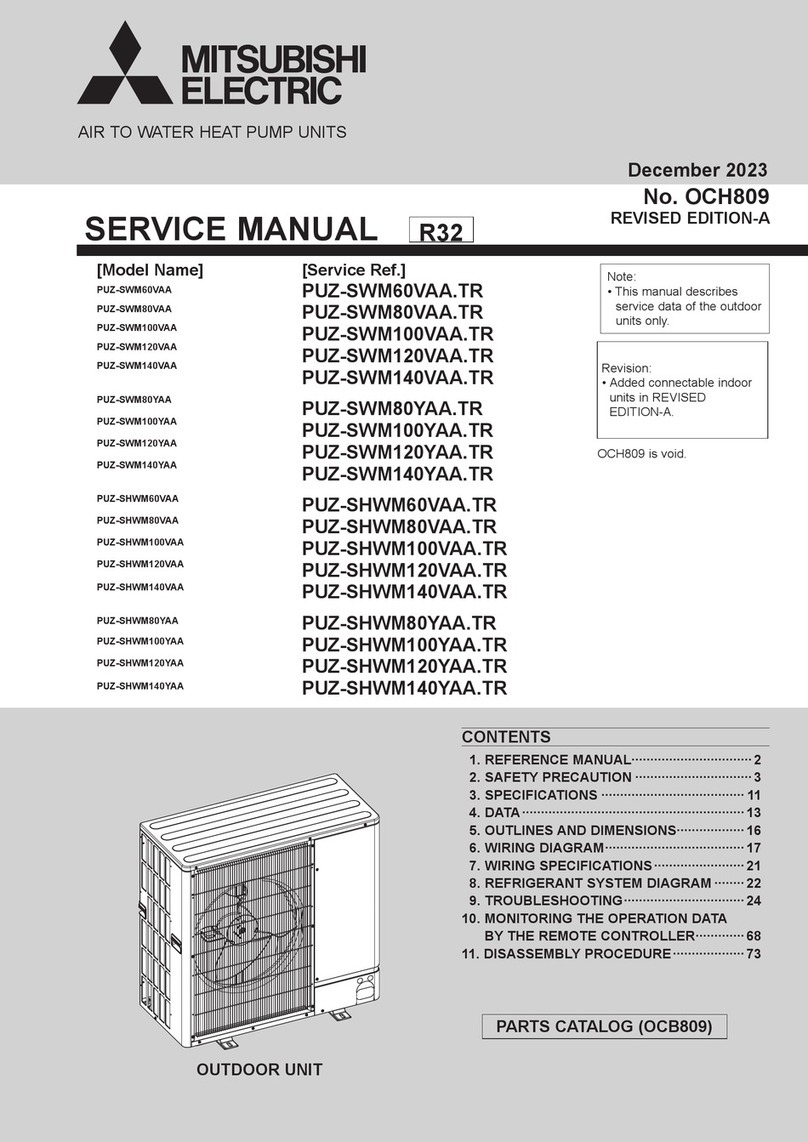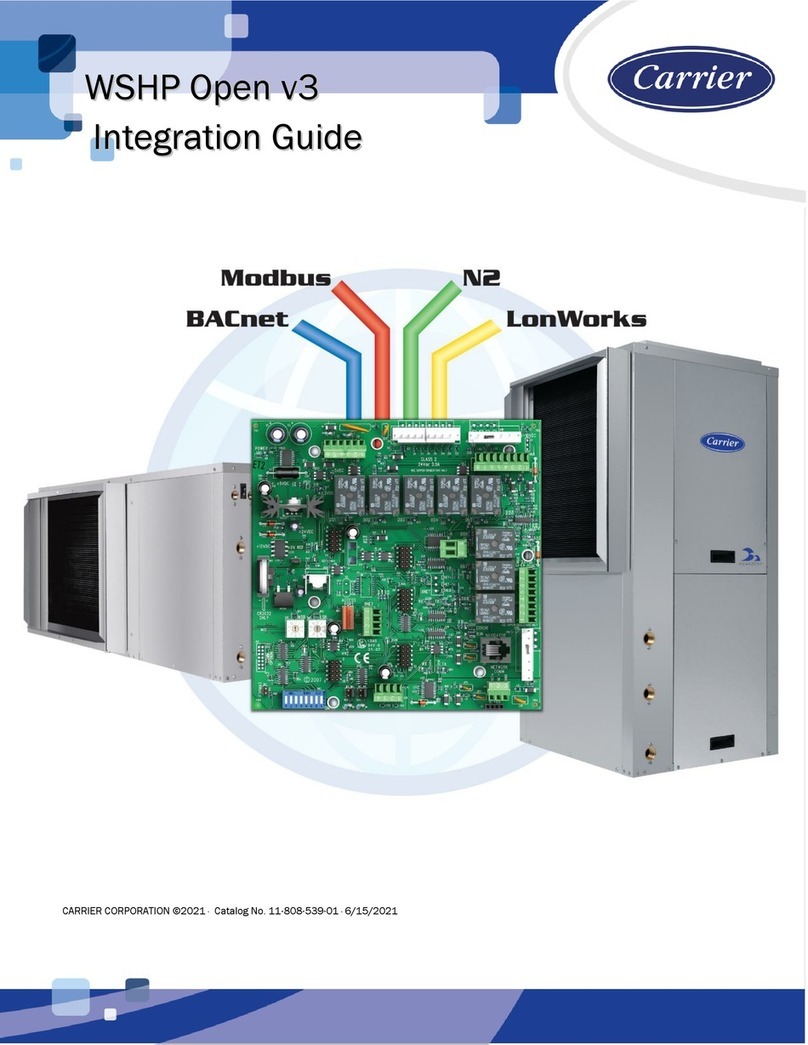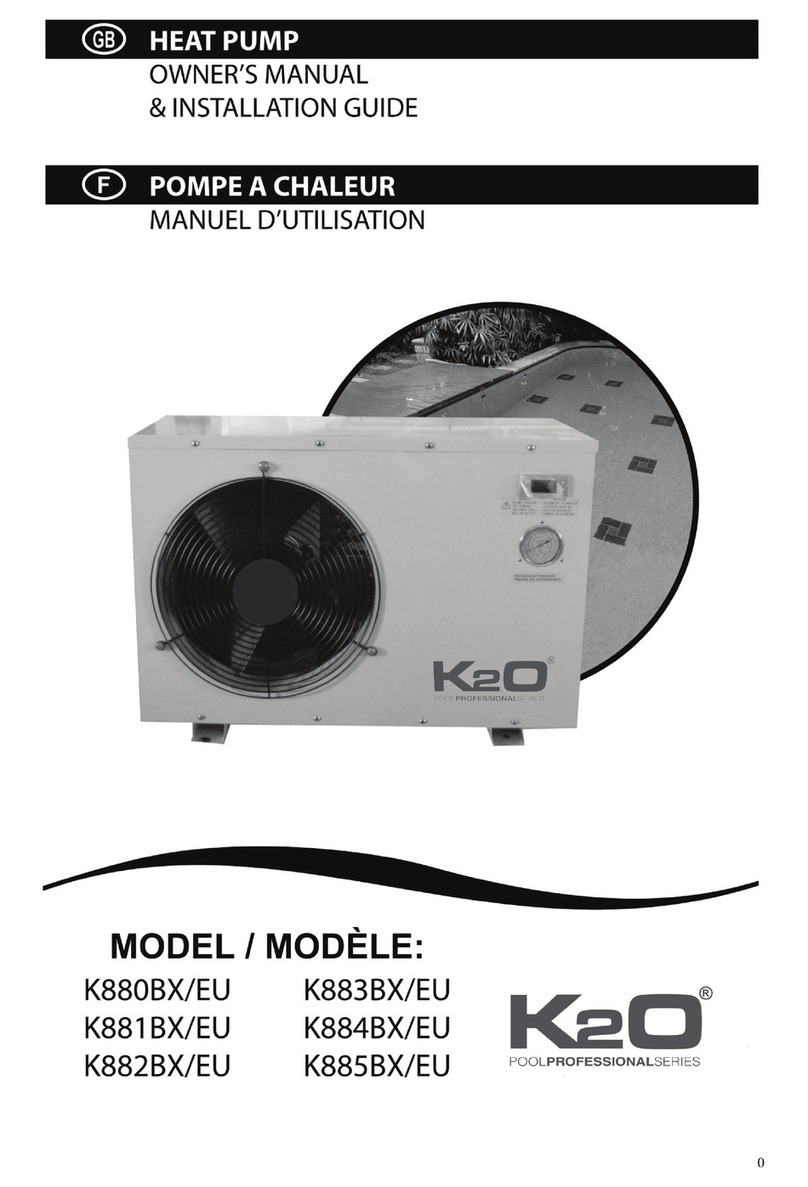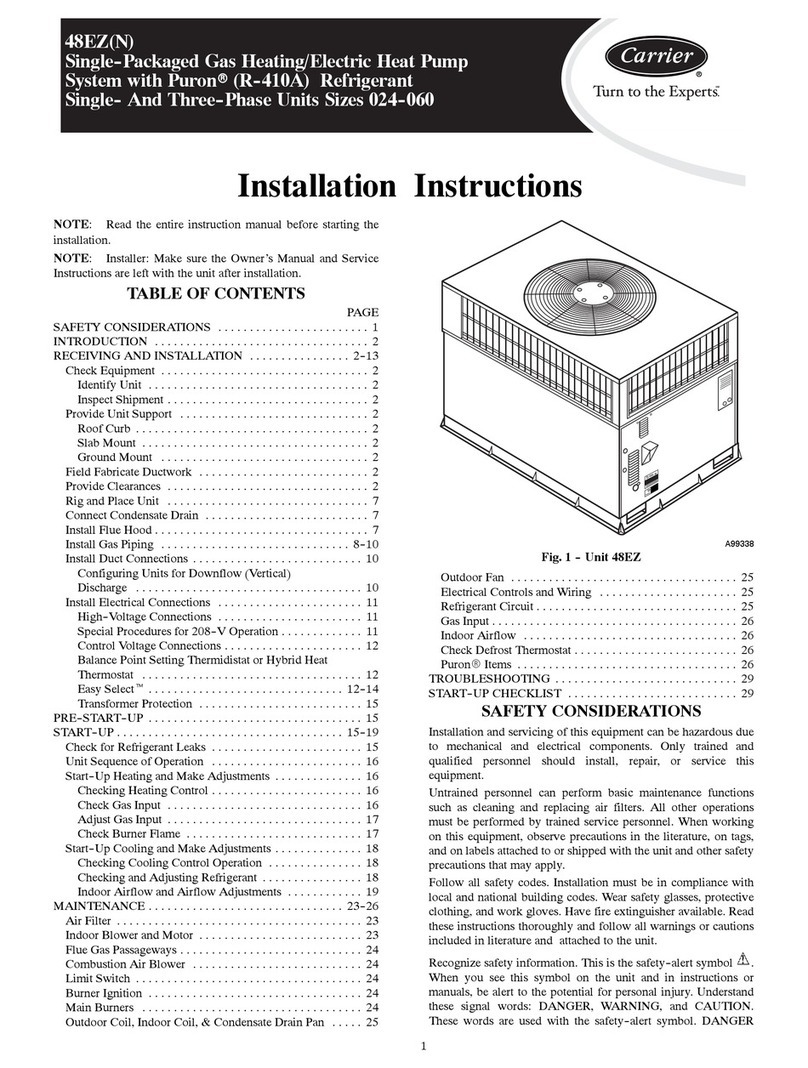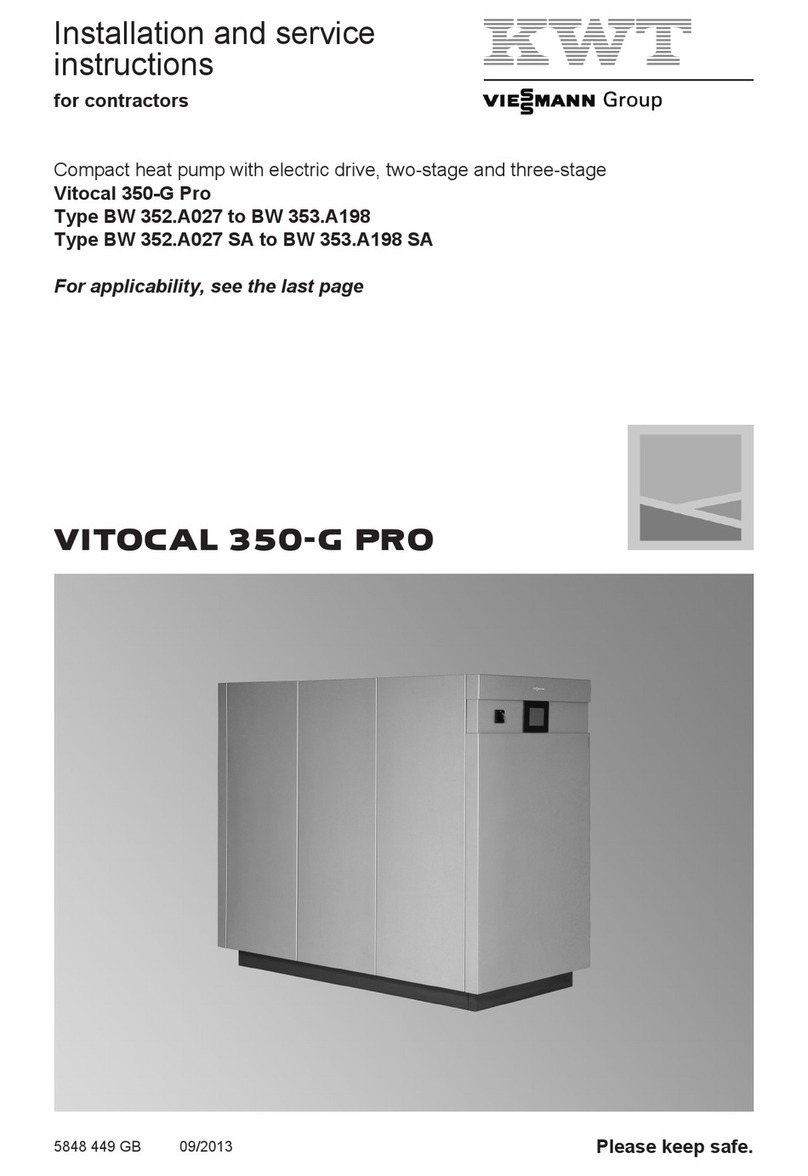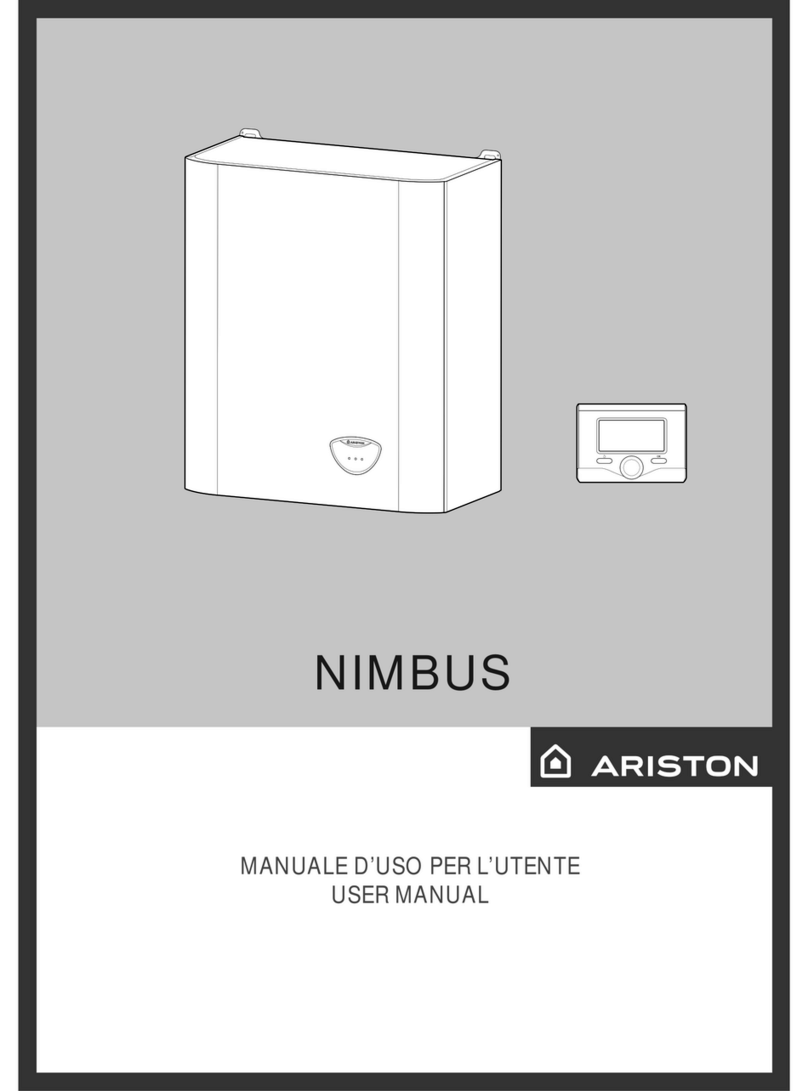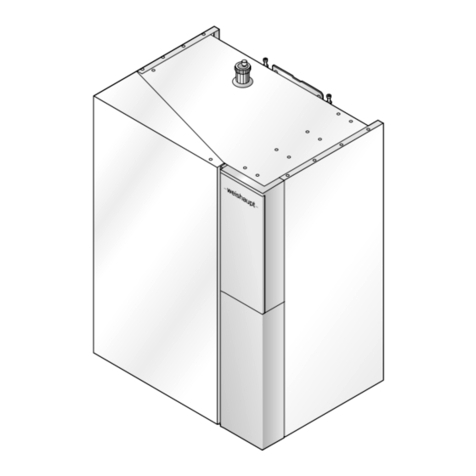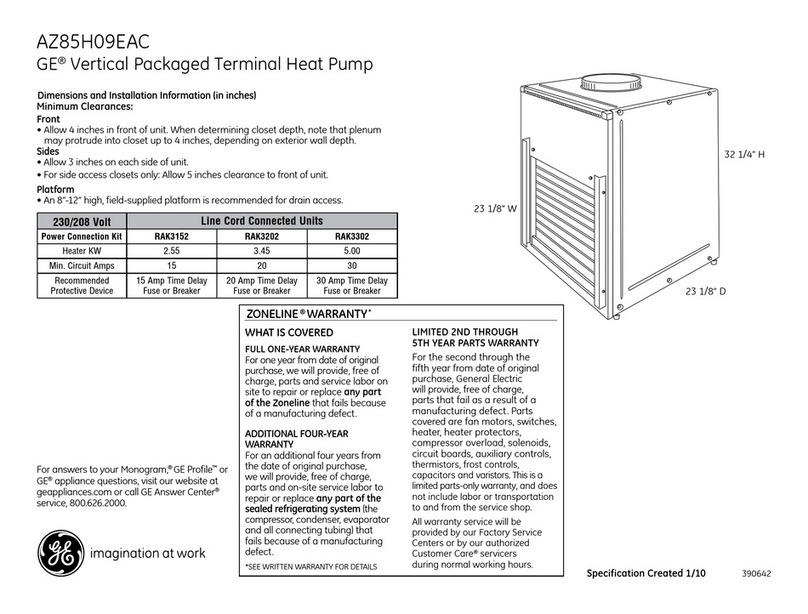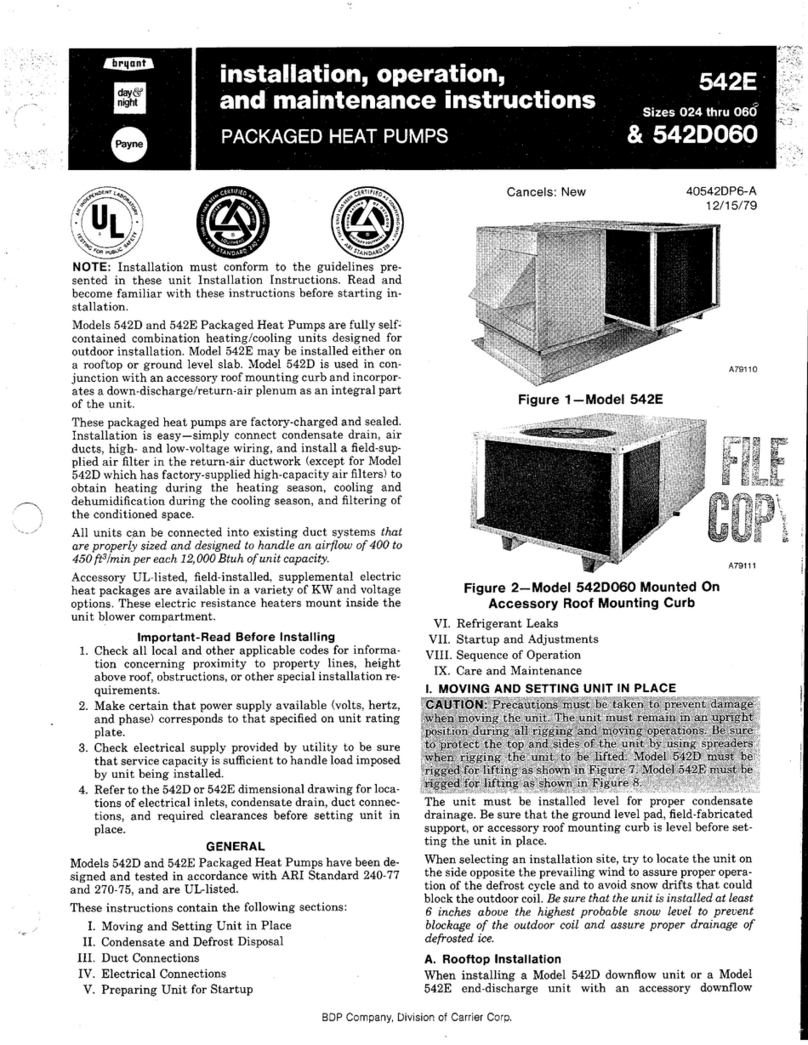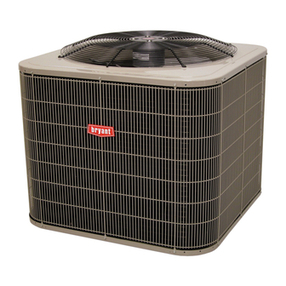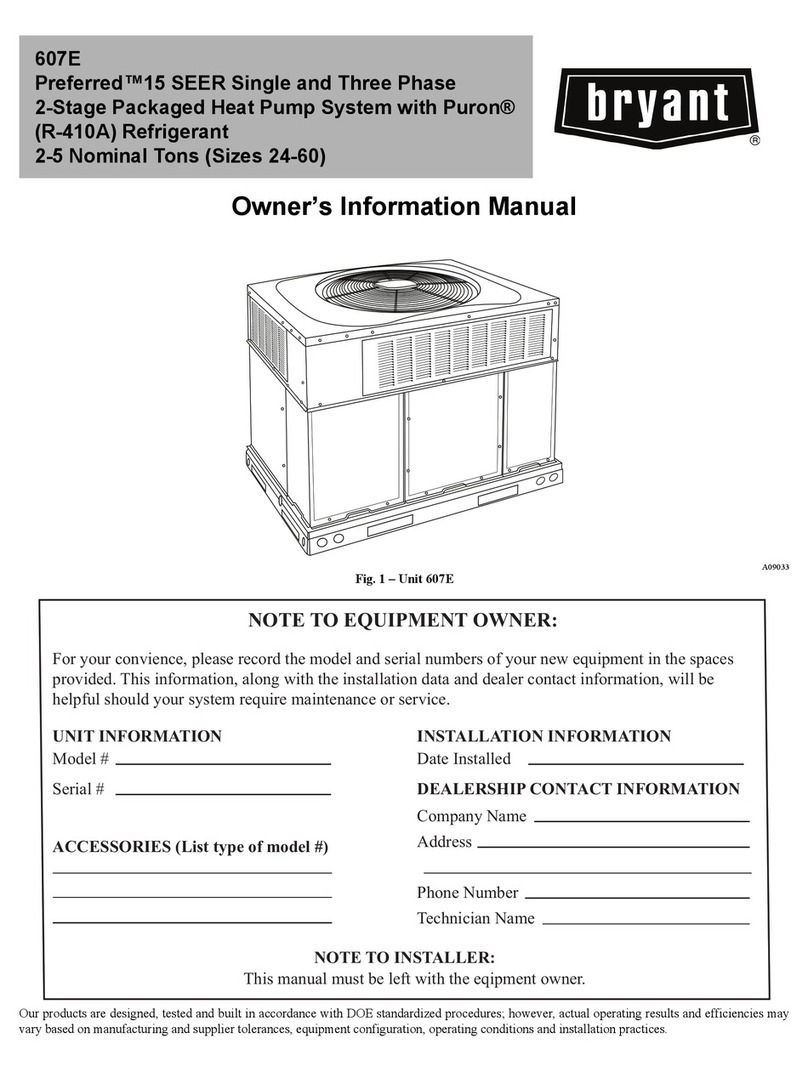
C. Supplemental Heat
Your heat pump is your primary heating source. Your system may
also be equipped with a supplemental heating source such as
electric heat. On cold days and nights, your system will automati-
cally turn on the supplemental heat in order to maintain the level
of comfort you have selected.
When your heat pump needs additional heat to keep you comfort-
able, your Carrier electronic thermostat will turn on the supple-
mental heat (if equipped) and will display the “AUX HT” message.
D. Defrost Mode
When your heat pump is providing heat to your home and the
outdoor temperature drops below 45˚F, moisture may begin to
freeze on the surface of the coil. If allowed to build up, this ice
would impede airflow across the coil and reduce the amount of
heat absorbed from the outside air. So, to maintain energy-efficient
operation, your heat pump has an automatic defrost mode. The
defrost mode starts at a preset time interval of 90 minutes,
although, it may be reset to either 30 or 50 minutes. Defrost will
start at the preset time only if the ice is sufficient to interfere with
normal heating operation. After the ice is melted from the coil, or
after a maximum of 10 minutes in defrost mode, the unit
automatically switches back to normal heating operation.
Do not be alarmed if steam or fog appears at the outdoor unit
during defrost mode. Water vapor from the melting ice may
condense into a mist in the cold outside air. During certain weather
conditions such as heavy snow and freezing rain it is not
uncommon for ice to build up on the unit grille. This is normal for
these weather conditions. Do not attempt to remove the ice from
the unit grille. This condition will not affect the proper function of
the unit and will clear a few days.
E. Emergency Heat Mode
This allows your supplemental heating source to keep your home
or office warm until your heat pump can be serviced. Also, if the
electricity to your heat pump has been off for more than 30
minutes, switch your thermostat to EHEAT mode before restarting
your heat pump. Leave the system in EHEAT mode for an amount
of time equal to the power outage. It is not necessary to exceed 12
hrs. (If you cannot determine how long the power has been off,
leave the system in EHEAT mode for 8 hrs.)
PERFORMING ROUTINE MAINTENANCE
With the proper maintenance and care, your heat pump will
operate economically and dependably. Maintenance can be accom-
plished easily by referring to the following directions. However,
before performing maintenance, consider these important safety
precautions:
WARNING: ELECTRICAL SHOCK HAZARD
Failure to follow this warning could result in personal
injury and/or death.
Disconnect all electrical power to the indoor air handler
or furnace before removing access panels to perform any
maintenance. Disconnect power to both the indoor and
outdoor units. Note: There may be more than 1 electrical
disconnect switch.
CAUTION: PERSONAL INJURY HAZARD
Failure to follow this caution may result in personal
injury.
Although special care has been taken to minimize sharp
edges in the construction of your unit, to avoid injury be
extremely careful when handling parts or reaching into
the unit.
A. Check the Air Filter
A dirty air filter will cause excessive strain on the compressor and
blower motor. This can cause the components to overheat and
automatically shut down. In the worst case, the components will
fail and need to be replaced. To avoid inefficient or failed
operation of your unit, CHECK THE FILTER(S) EVERY 3
MONTHS. Replace filter(s) when necessary, or clean the filter(s)
if you have the reusable type.
Disposable filters should be replaced by similar, new filters of the
same dimensions.
Reusable, permanent filters should be washed in a solution of cold
water and mild detergent, then rinsed and thoroughly dried. THE
FILTER MUST BE COMPLETELY DRY BEFORE BEING
REINSTALLED. To avoid prolonged shutdown of your unit while
a filter is drying, you should have an extra filter on hand. This
allows you to rotate between the two with minimal downtime for
your comfort system. Extra filters may be purchased from your
dealer.
The filters(s) and filter rack for a packaged system are supplied
and installed by the contractor or dealer. Typically, the filter(s) and
rack are located in the return-air duct at the outdoor unit or behind
the return-air grille(s). Have your dealer show you the location of
your filter(s) and the procedures for removal and replacement.
If your system includes a high efficiency or electronic air cleaner,
refer to air cleaner User’s Manual for proper filter cleaning or
replacement.
B. Outdoor Coil
If grass clippings, leaves, shrubbery, and debris are kept away
from the unit, minimal care should be sufficient to keep the system
functioning properly. However, if the outdoor coil becomes dirty,
use a vacuum cleaner or shop vac with soft brush attachment to
clean the exterior surface. Vacuum coil surface using an up and
down motion. Be careful not to bend or damage fins.
If dirt is deep in the coil, contact your dealer for service. Do not
attempt this yourself.
C. Outdoor Coil—Sea Coast
If your unit is located near the ocean, special maintenance is
required. Ocean mist/breeze carries salt, which is corrosive to most
metals. Although your new unit is made out of galvanized metal
Fig. 4—Main Electrical Disconnect A92135
MAIN
ON
OFF
TABLE 1—FILTER SIZE DATA
UNIT SIZE FILTER SIZE
604A024-030 20x24
604A036-060 24x36
—3—
